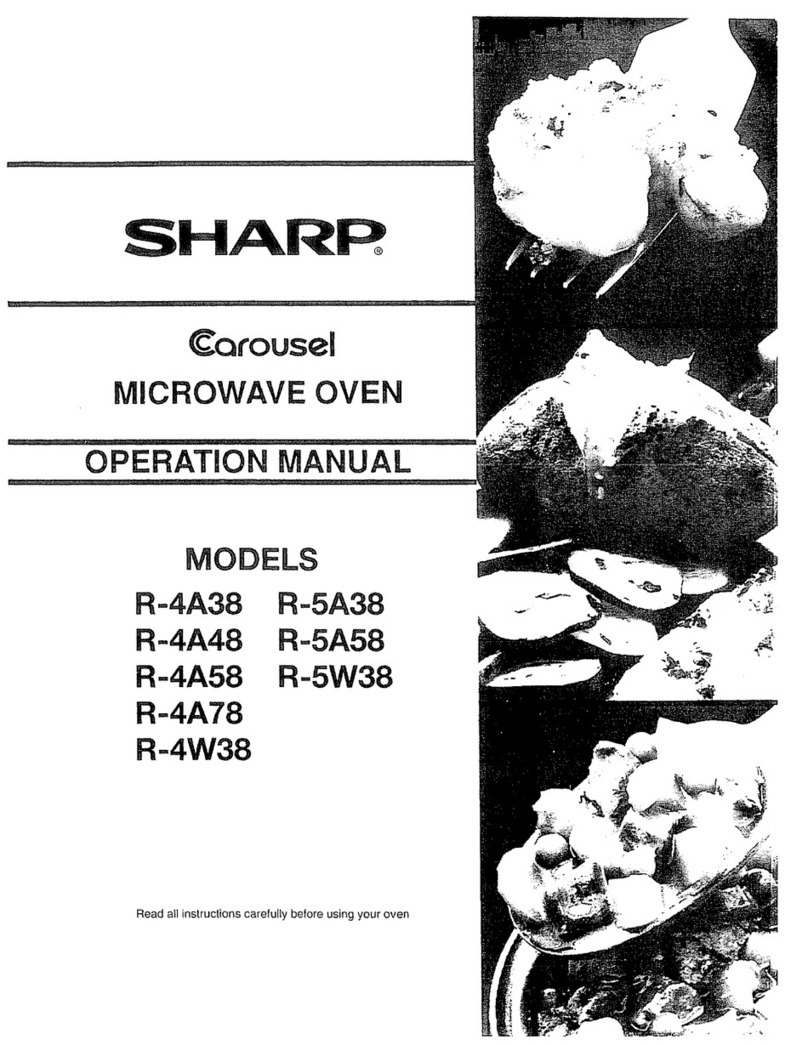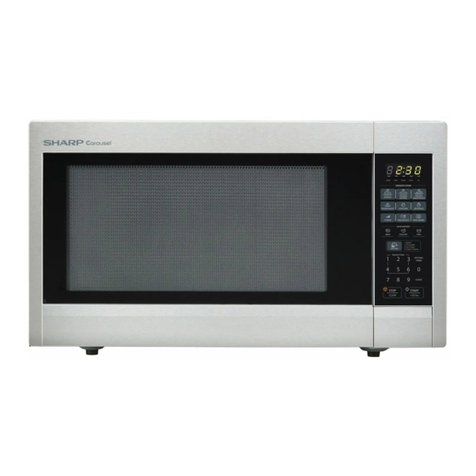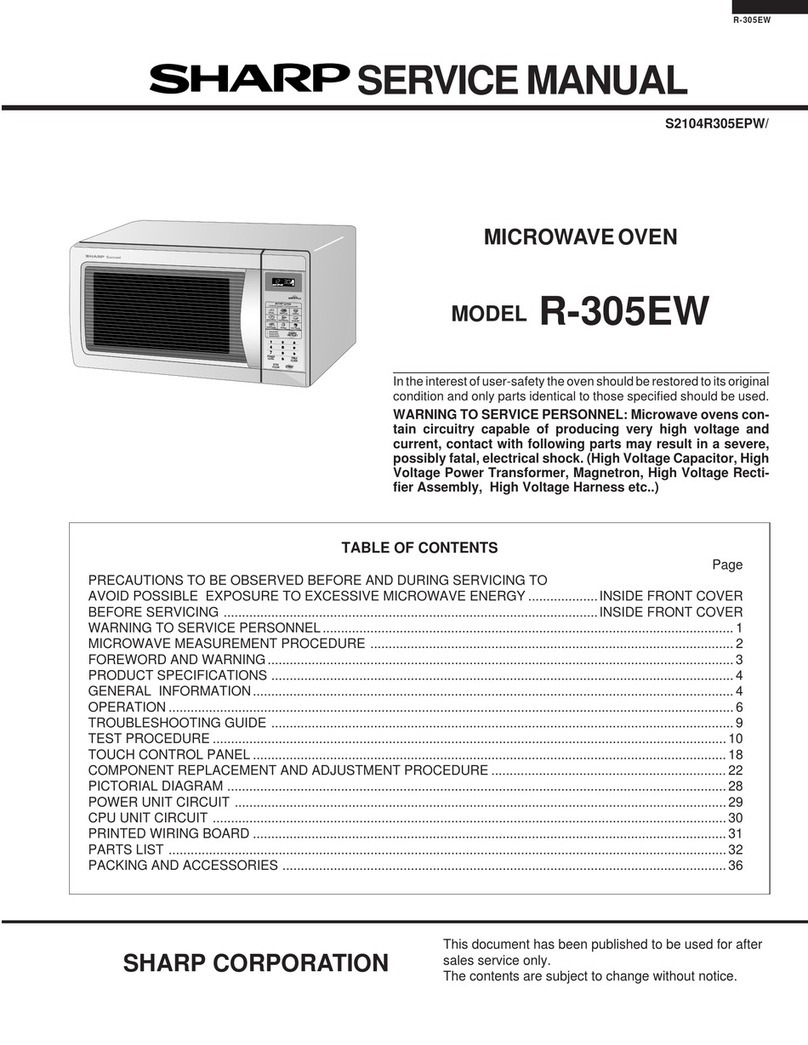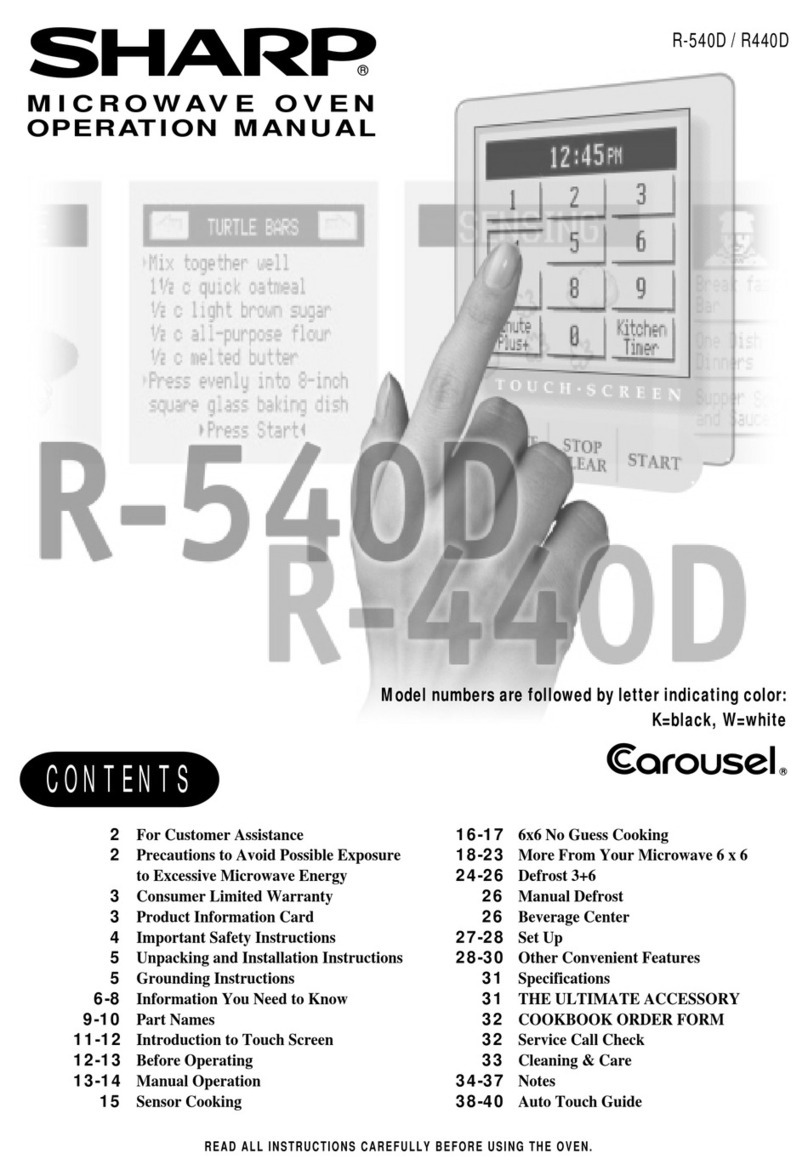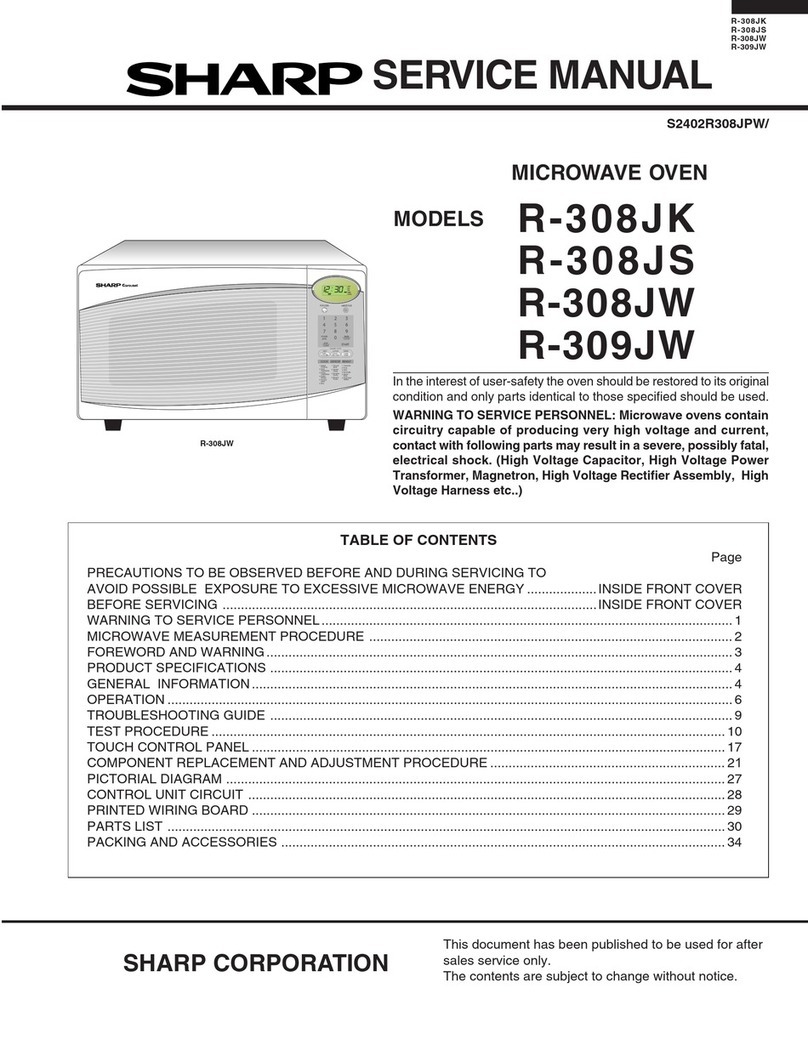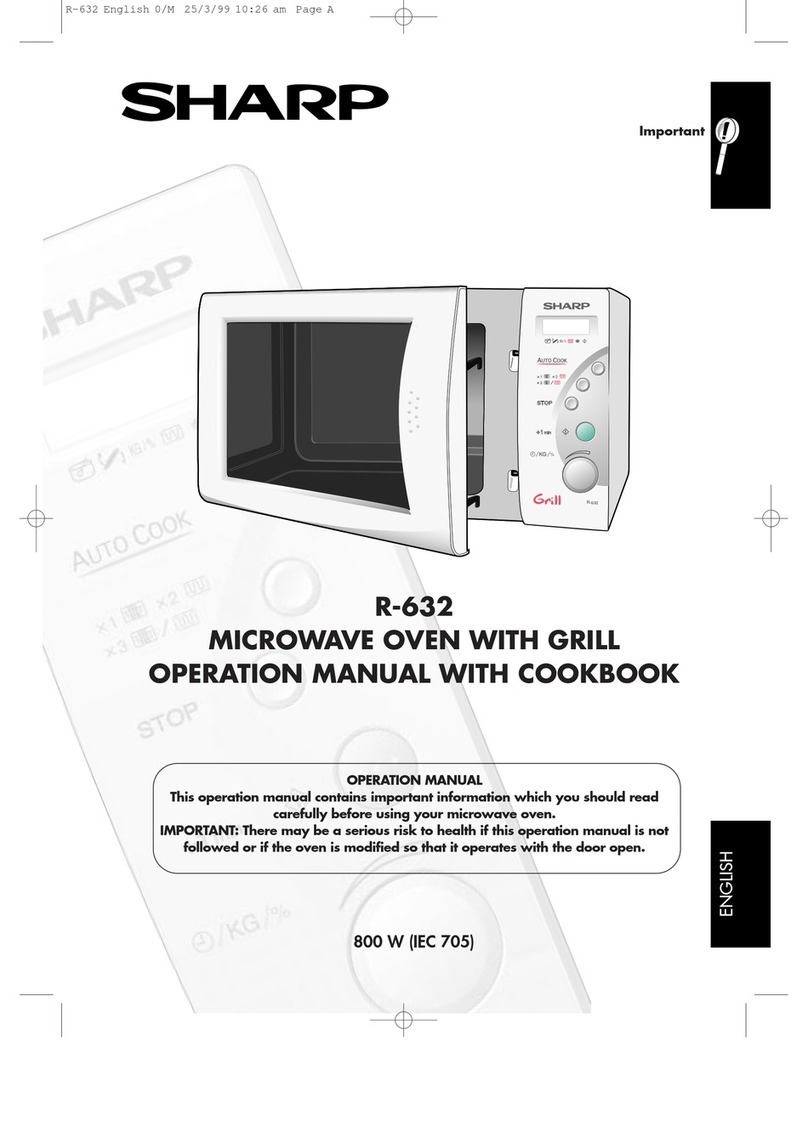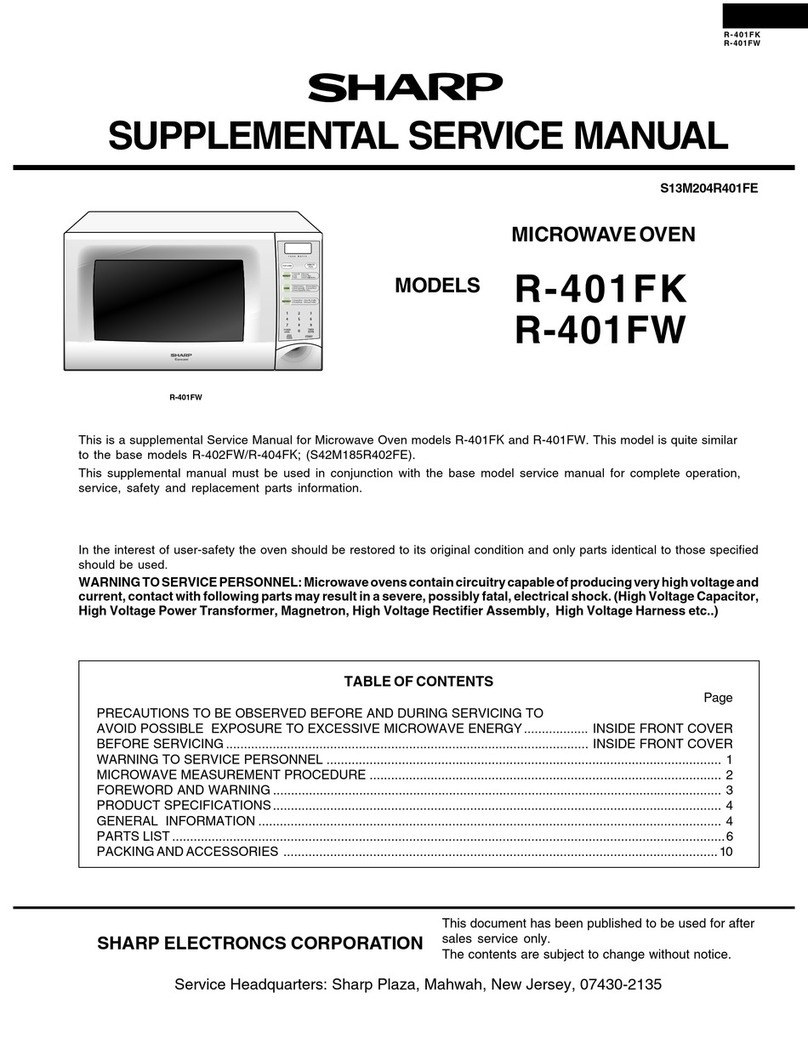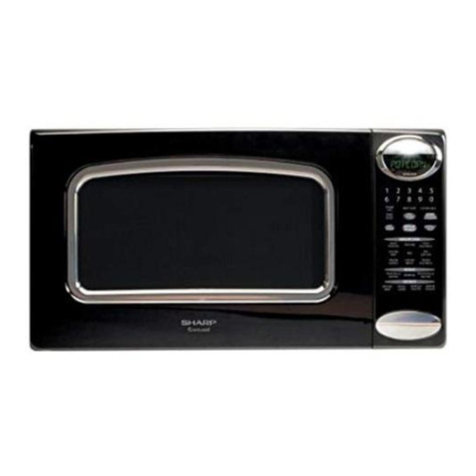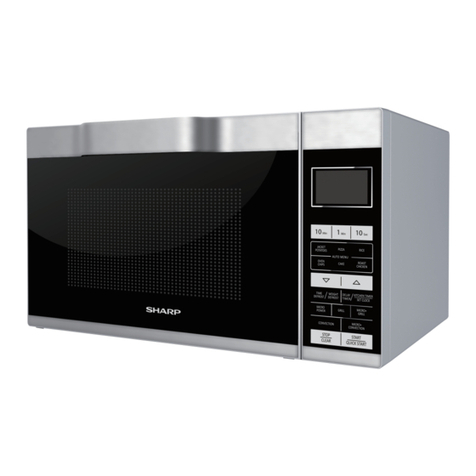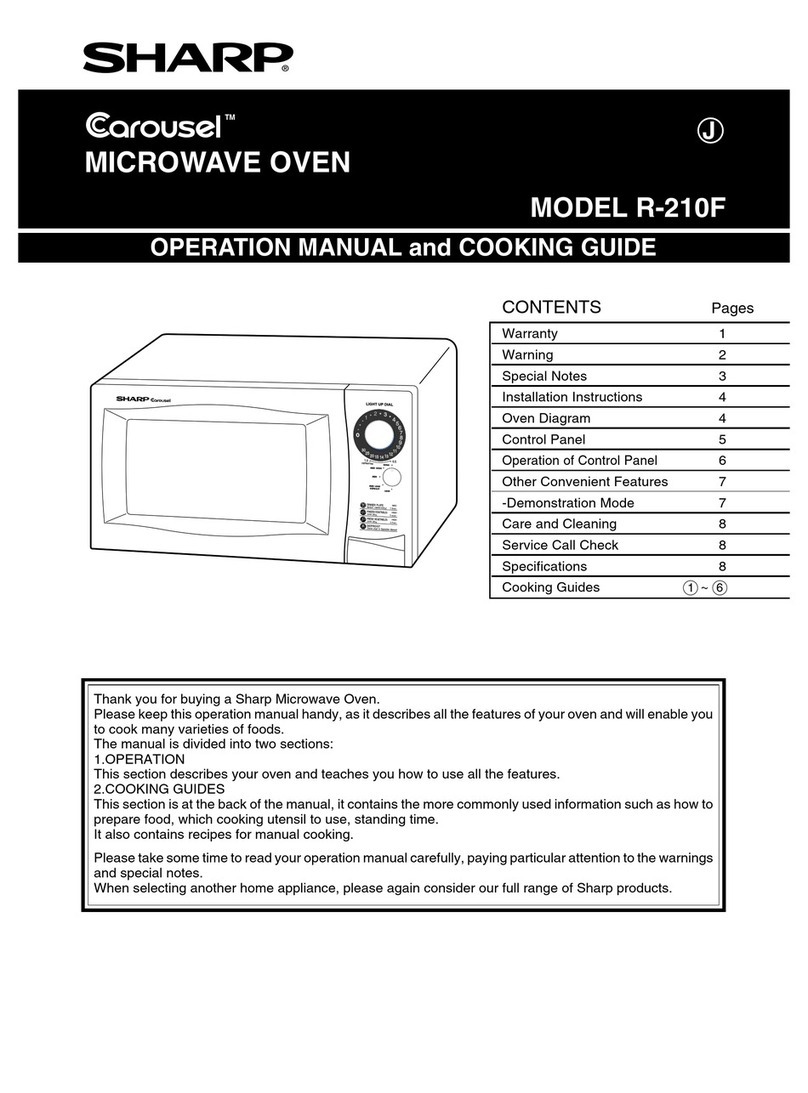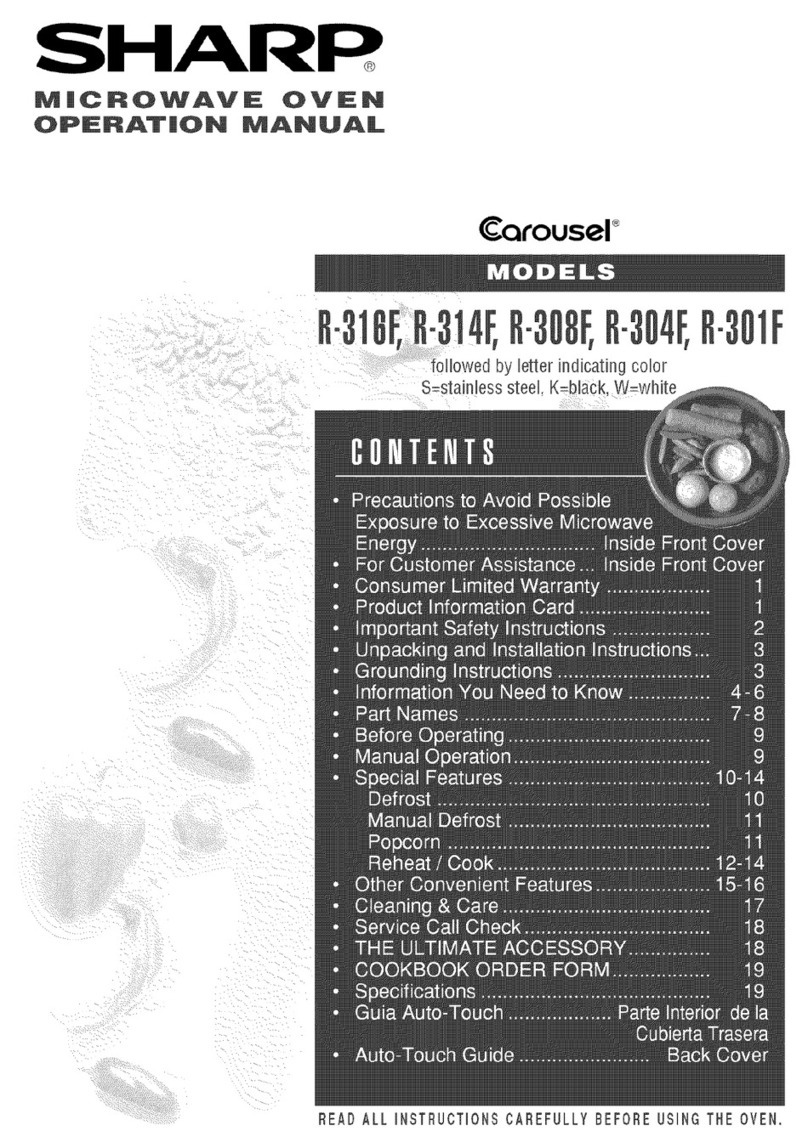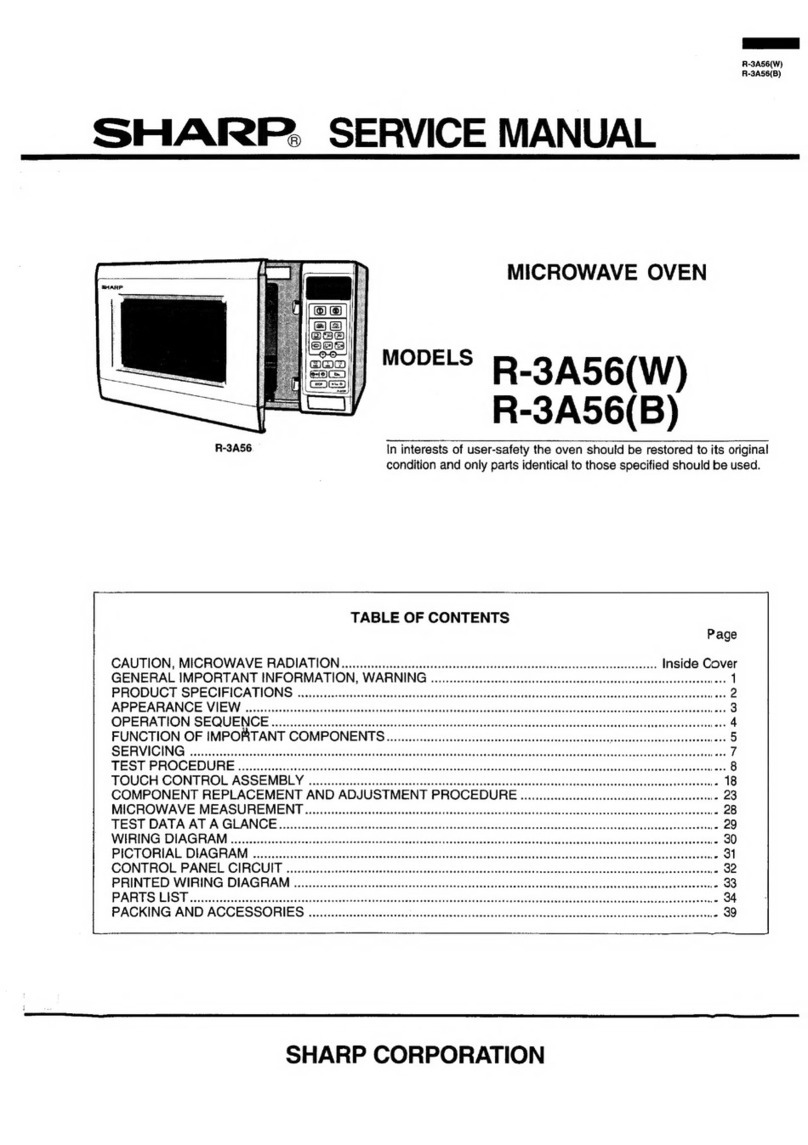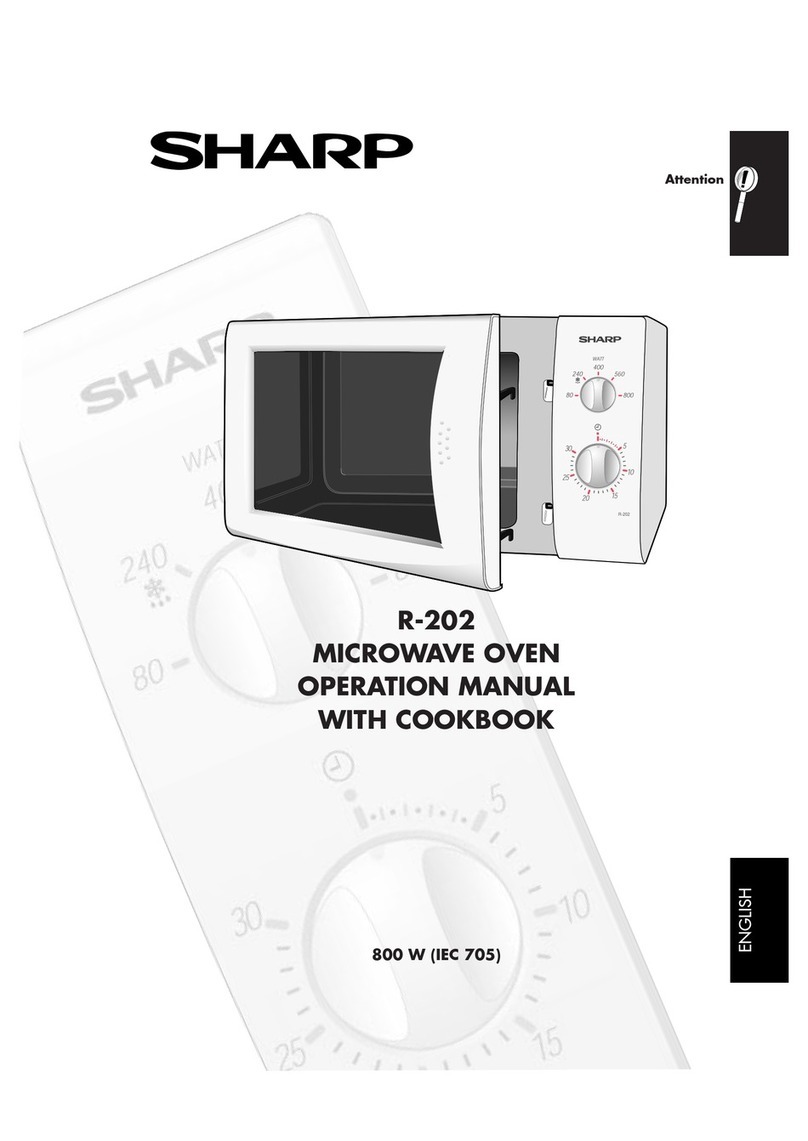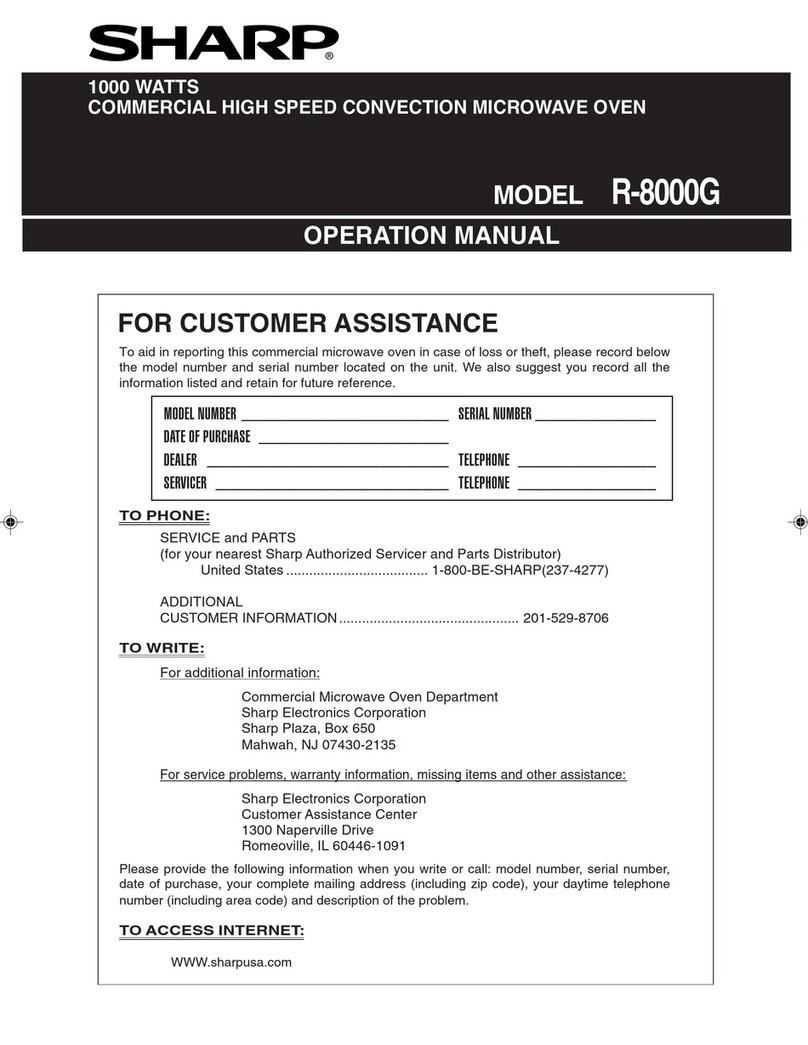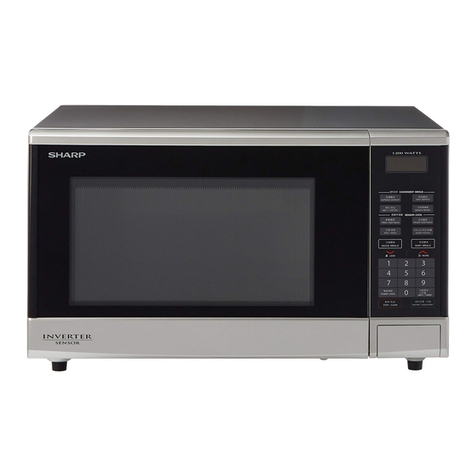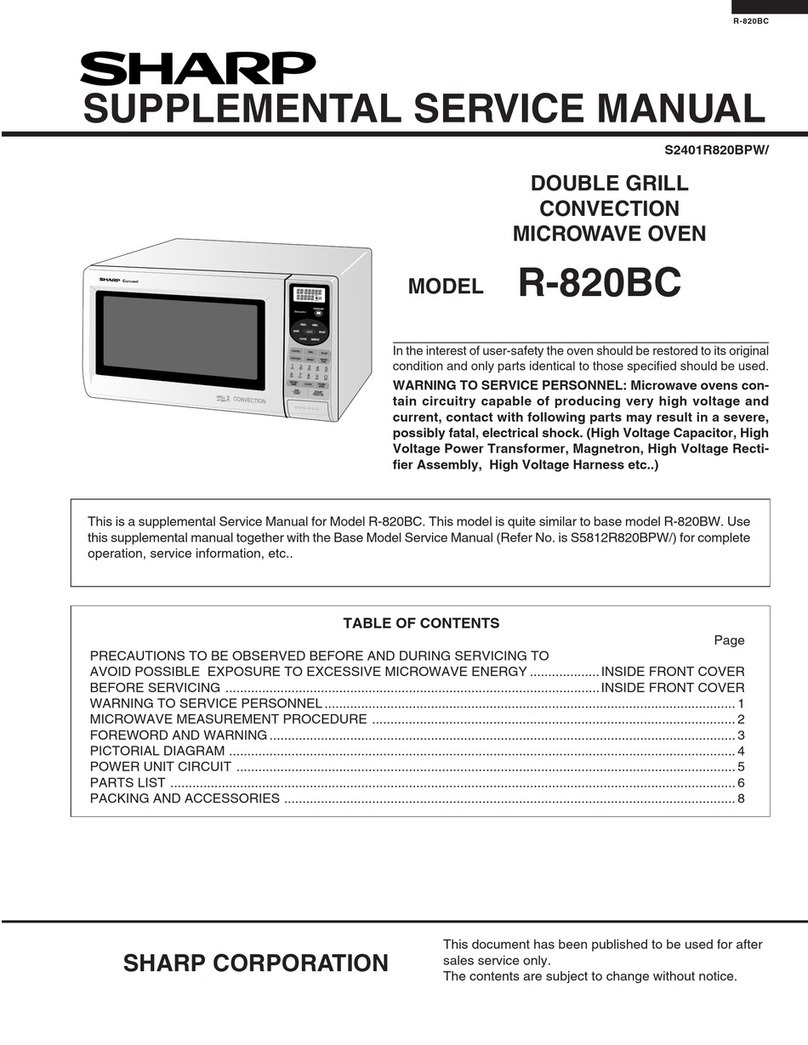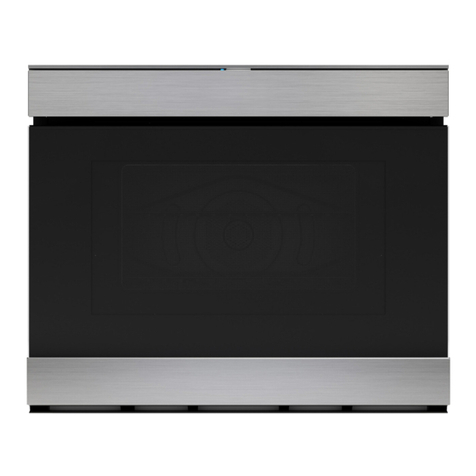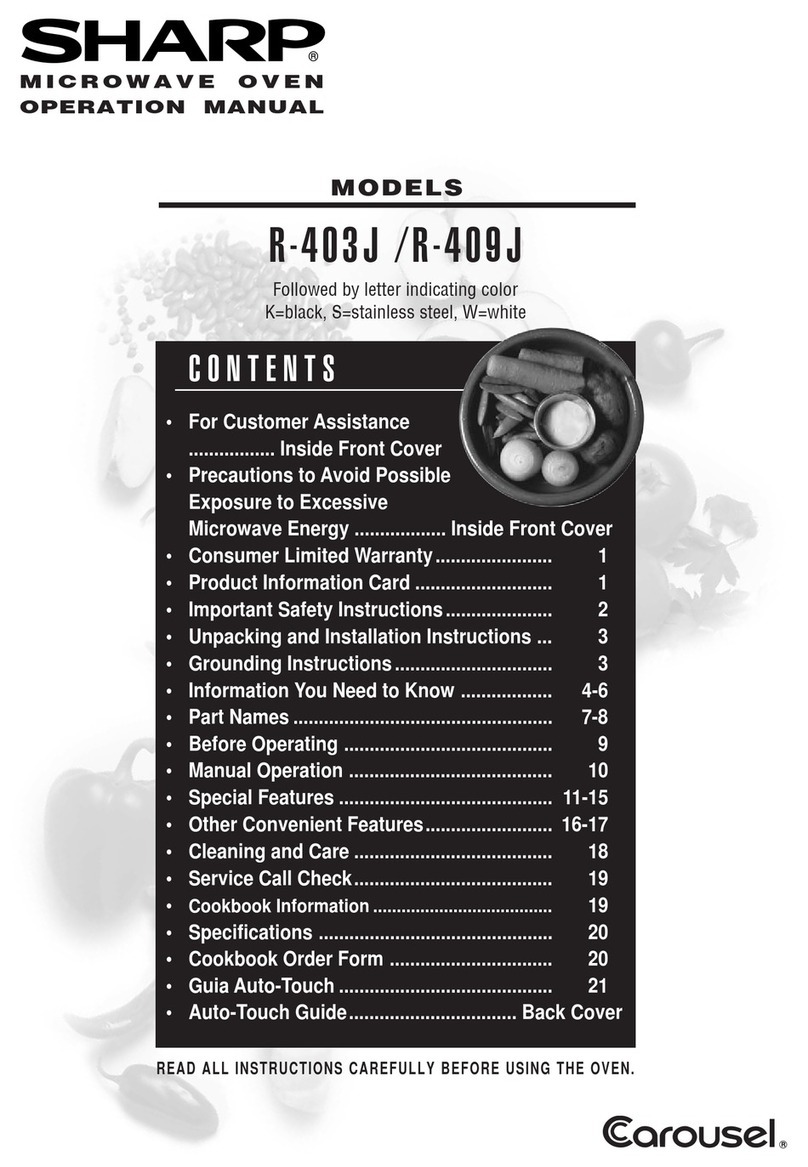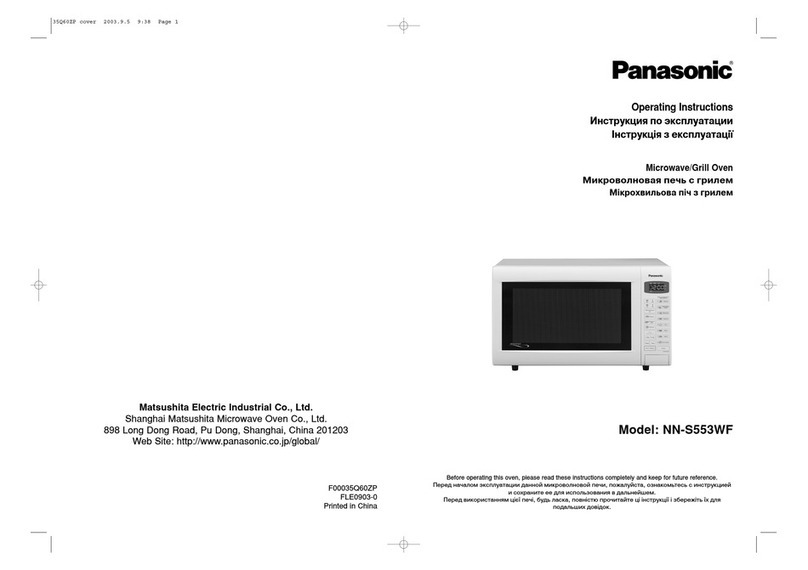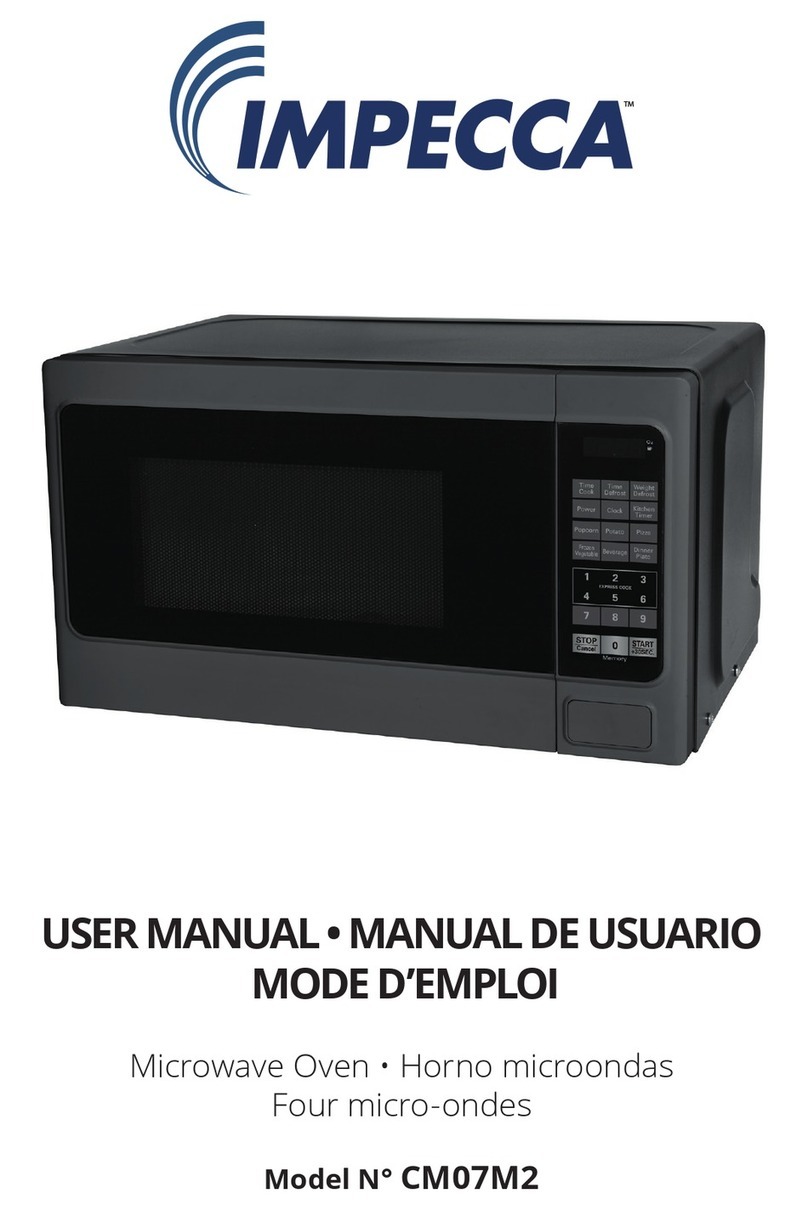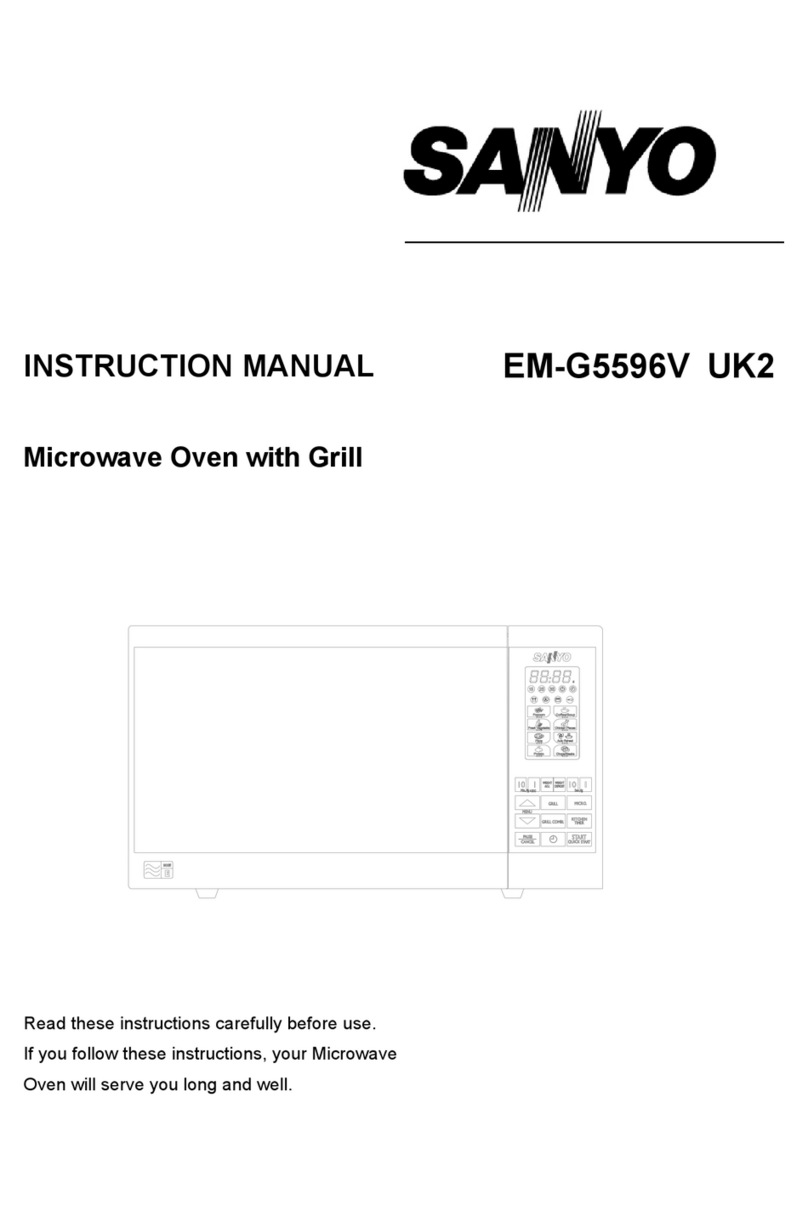R-211A
5
FUNCTION OF IMPORTANT COMPONENTS
DOOR OPEN MECHANISM
The door is opened by pushing the open button on the
control panel, refer to the Figure D-1.
When the open button is pushed, the open button pushes
theswitchleverupandinturnthelatchheadsarereleased
from latch hook. When the latch heads are released, the
switch lever returns to its original position by its own
weight.
LATCH HOOK
LATCH
HEADS
DOOR
MONITOR SWITCH
1 ST. LATCH
SWITCH
SWITCH LEVER
2ND. LATCH
SWITCH
Figure D-1. Door Open Mechanism
1ST.LATCH SWITCH AND2ND.LATCHSWITCH
1. Whentheovendoorisclosed,thecontacts(COM-NO)
must be closed.
2. When the oven door is opened, the contacts (COM-
NO) must be opened.
MONITOR SWITCH
1. Whentheovendoorisclosed,thecontacts(COM-NC)
must be opened.
2. When the oven door is opened, the contacts (COM-
NC) must be closed.
3. Iftheovendoorisopenedandthecontacts(COM-NO)
ofthe1stlatchswitchand 2nd latchswitchfailtoopen,
the fuse blows simultaneously with closing the con-
tacts (COM-NC) of the monitor switch.
CAUTION: BEFORE REPLACING A FUSE F TEST
THE1STLATCHSWITCHSW1,2NDLATCH
SWITCH, MONITOR SWITCH AND MONI-
TORRESISTOR R FORPROPEROPERA-
TION. (REFER TO CHAPTER "TEST PRO-
CEDURE".)
MONITOR RESISTOR 0.8Ω20W
The monitor resistor prevents the fuse F bursting when
the fuse blows due to the operation of the monitor
switch.
FUSE
1. Thefuseblowswhenthecontacts(COM-NO)ofthe1st
latch switch and 2nd latch switch remain closed with
the oven door open and when the monitor switch
closes.
2. If the wire harness or electrical components are short-
circuited,thefuseblowstopreventanelectricshockof
fire hazard.
TEMPEATURE FUSE 120˚C (OVEN)
The temp. fuse located on the top of the oven cavity is
designedtopreventdamage totheovenifthefoodsinthe
oven catch fire due to over heating produced by improper
settingofcooktimeorfailure of controlunit.Undernormal
operation,thetemp.fuseremainsclosed.However,when
abnormally high temperatures are reached within the
ovencavity,thetemp.fusewillopenat120˚C,causingthe
oven to shut down. The defective fuse must be replaced
with a new one.
THERMAL CUT-OUT 95˚C (MAGNETRON )
The thermal cut-out located on the top of the oven cavity
isdesignedtopreventdamagetothemagnetronifanover
heated condition develops in the tube due to cooling fan
failure,obstructedairguide,dirtyorblockedairintake,etc.
Under normal operation, the thermal cut-out remains
closed.However,whenabnormallyhightemperaturesare
reached within the magnetron, the thermal cut-out will
open at 95˚C, causing the oven to shut down. When the
magnetron has cooled to 75˚, the thermal cut-out closes
and cook cycle will resume.
TURNTABLE MOTOR
The turntable motor drives the roller stay to rotate the
turntable.
FAN MOTOR
Thefanmotordrivesabladewhichdrawsexternalcoolair.
Thiscool air isdirectedthroughthe air vanessurrounding
the magnetron and cools the magnetron. This air is chan-
nelled through the oven cavity to remove steam and
vapours given off from the heating foods. It is then ex-
hausted through the exhausting air vents at the oven
cavity.
TIMER MOTOR (WITH VARI-SWITCH)
Timer switch
1. Whenthetimerisat"0"position,theswitchofthetimer
are opened.
2. When the timer is turned clockwise from "0" position,
the switch of the timer are closed.
Vari-switch
If the variable cooking control is set at HIGH or ME-
DIUM DEFROST, cooking position, Rated voltage is
supplied to the power transformer intermittently within
a 30 seconds time base. The following chart shows the
vari-switch operation in the various modes.
are given.
SETTING
